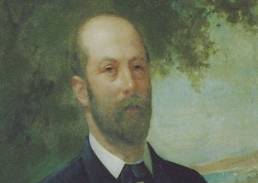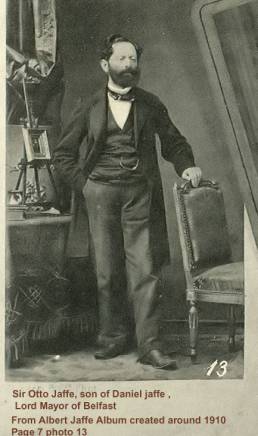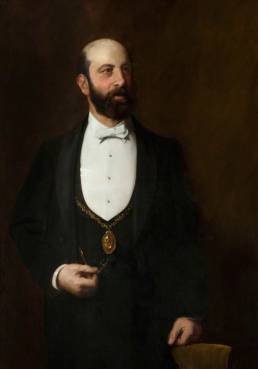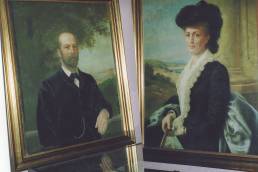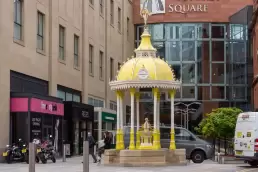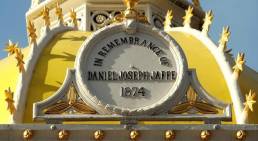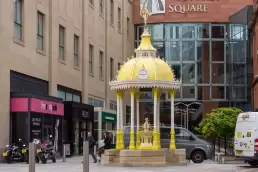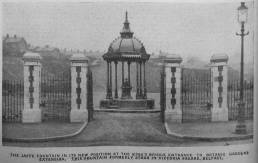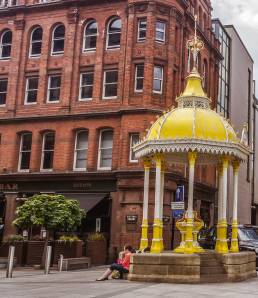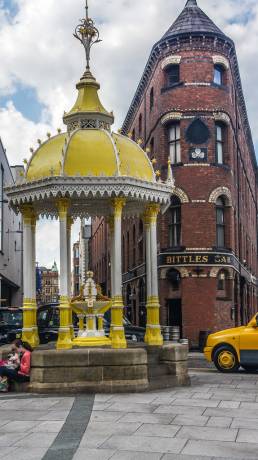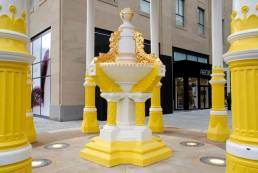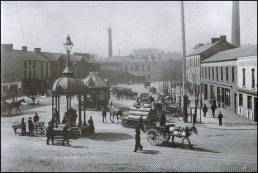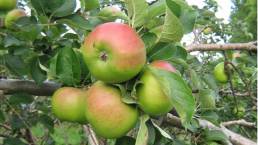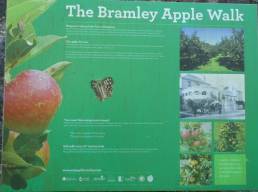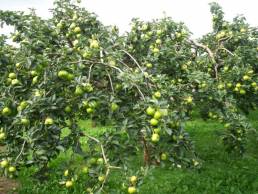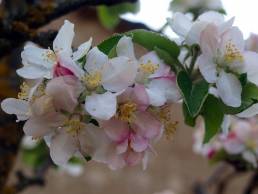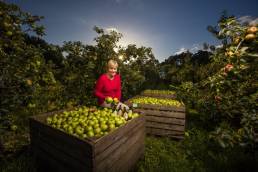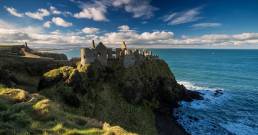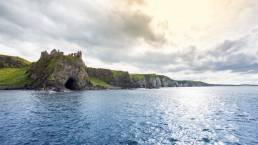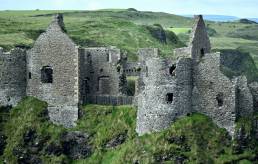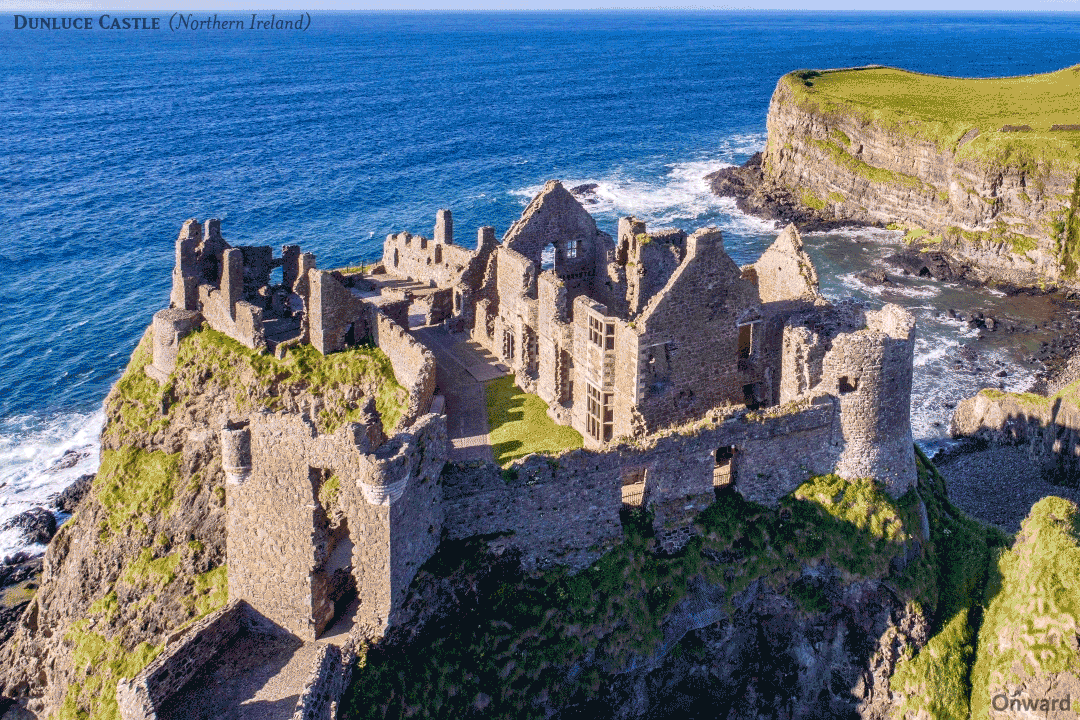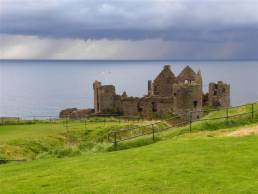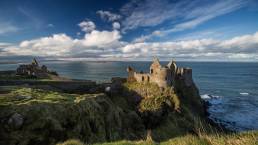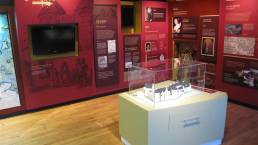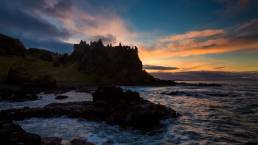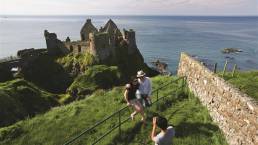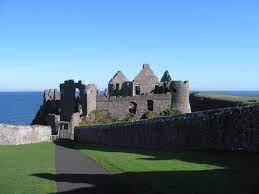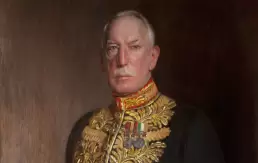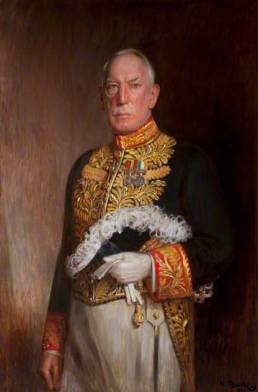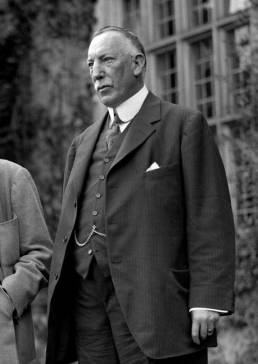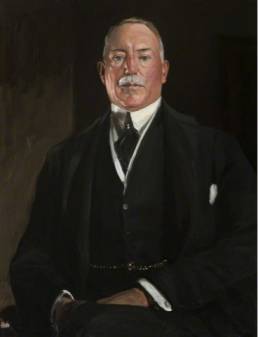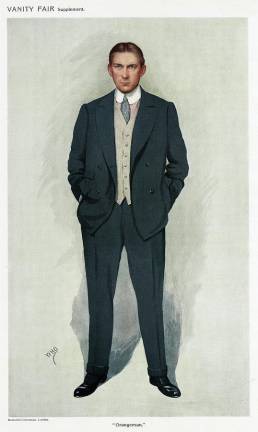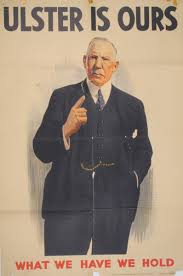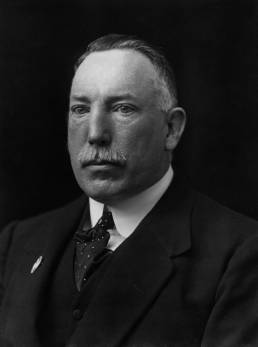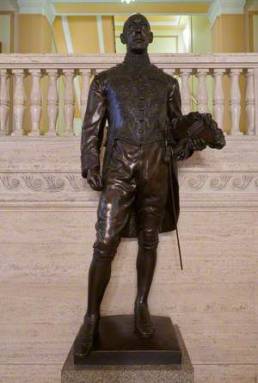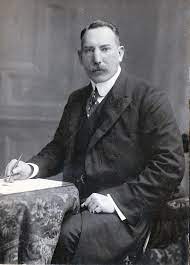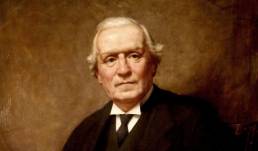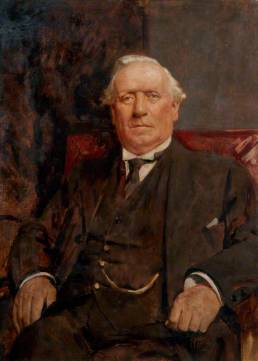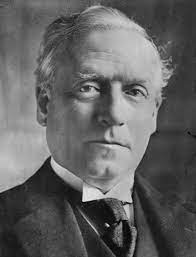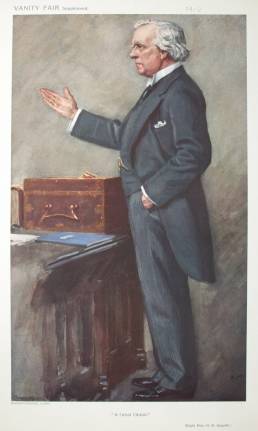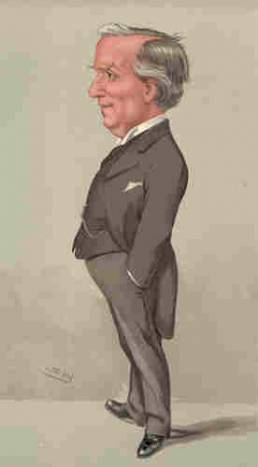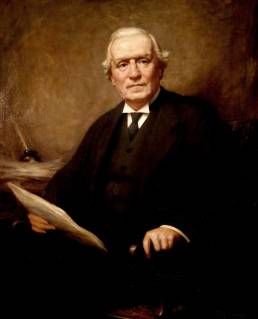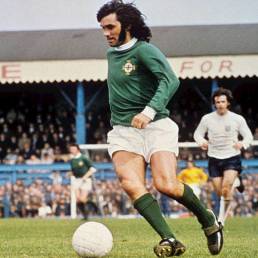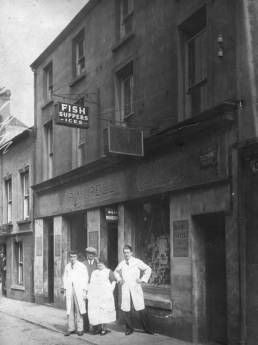Being Creative
Sir Otto Jaffe
Sir Otto Jaffe was born in Hamburg in 1846. He came to Belfast at the age of 12 and at 16 he entered the family business, Jaffe Brothers Linen Merchants.
Otto entered public life in 1894 when he was chosen to represent St Anne’s Ward for the Belfast Corporation and in 1899 he was elected Lord Mayor of Belfast for the first time. He was a Liberal Unionist and indeed was active in Unionist politics most notably the anti-Home Rule campaign.
In 1900 Otto Jaffe was knighted by the then Lord Lieutenant, Lord Cadogan and in 1904 he was made Lord Mayor of Belfast for the second time.
He was one of the leading advocates of Unionism articulating a strong economic and commercial case against Home Rule. He feared it would have a devastating impact on Belfast business life and the wider economic wellbeing of Ireland.
He built his house, Kin Edar, in 1898 shortly before he became Lord Mayor for the first time. This impressive residence stood on ground near what is now Sydenham Avenue in east Belfast
Philanthropy
Sir Otto was well known throughout his public life in Belfast for his generosity of both time and money. During his first term as Lord Mayor he and the Lady Mayoress raised £10,000 for the dependants of soldiers and sailors serving in the Boer War. He was officially connected with the Royal Victoria Hospital where he was Governor, having also contributed £1,000 of his own money to the original building fund. Otto was particularly interested in education and in 1905 he gave £4,000 to the fund for better equipment for Queen’s College (now university). He was an active member of the committee which got the Public Libraries Act extended to Belfast, leading to the first free library being established. In 1904, he contributed £4,000 to the building of a new synagogue in north Belfast.Three years later he erected the Jaffe School for the Jewish Children of Belfast on the Cliftonville Road, again at his own cost.
Sir Otto is also connected to east Belfast through the linen industry. In 1910 he erected the Jaffe Spinning Mill on the Newtownards Road, also known as Strand Spinning.This provided work for about 350 local people, rising to 650 in 1914 when the company expanded to make munitions. In later years the business was bought over by James Mackie and Son and is still visible today as the PortviewTrade Centre.
Impact of the War
The First World War tore Europe apart and as the appalling loss of life registered with the public ant-German sentiment grew. The press often fuelled the paranoia and even the Royal Family had to erase their German heritage and family name. In 1914, after the outbreak of World War I, the government passed the Aliens Restriction Act.This controlled the activities of so called ‘enemy aliens’, restricting their movements and preventing them from living in certain areas.The Trading with the Enemy Act also closed down any German owned businesses.
In 1888 Otto Jaffe had been naturalised as a British citizen and denaturalised as a German Citizen. He was a unionist and saw himself as being loyal to king and country. His eldest son Arthur was also a captain in the London Irish Rifles and was fighting in the war. His stand against this legislation and treatment was well publicised and even raised in Parliament.
However his wealth, prominence and impeccable credentials and service did not prevent him from being viewed with suspicion. During the early days of 1915 Sir Otto and Lady Jaffe continued to live in Belfast with relative normality. But when a passenger liner, the Lusitania was torpedoed by a German submarine off the coast of Cork on 7 May resulting in the death of 1,000 people, anti-German feeling in Britain and Ireland rose to breaking point.
Friends of the Jaffes began to turn their backs on them and they even had to resign their place on the Committee of the Children’s Hospital when a group of local ladies refused to subscribe again if they stayed.
In a passioante letter to the Northern Whig in May 1915, Sir Otto states
“how anyone who has any knowledge of me and my life would think that I could approve of the horrible and detestable actions of which she (Germany) has been guilty is almost beyond my comprehension.” He also described himself as being “overwhelmed with pain and sorrow”.
Although it was agreed in the House of Lords, that it would not be reasonable for any naturalised Germans to face a tribunal and subsequent internment, it would seem that Sir Otto still felt compelled to leave Belfast for London in 1915.
Those who knew him say he left a broken man. He resigned his post as Alderman of Windsor Ward from Belfast City Council in June 1916 when he was almost 70 years of age.
He must have realised then that he would never return to Belfast, and by 1918 he was selling off some of his properties at less than a quarter of their value.
Sir Otto lived out the remainder of his life in London until his death in April 1929 at the age of 83.
Jaffe Memorial Fountain
One of the most beautiful pieces of heritage public street furniture is the famous Jaffe Fountain. Its vibrant yellow and ornate iron structure stands in spectacular contrast to the equally iconic Victoria Square dome. The fountain is also a lasting memorial to the Jewish community and their contribution to the civic, commercial and cultural life of the city.
THE JAFFE MEMORIAL FOUNTAIN – erected by his son Sir Otto Moses Jaffe who held the office of Belfast Lord Mayor twice and was a leader of the Jewish community in the city. The inscription reads:
Daniel Joseph Jaffe born Schwerin 1809 Died at Nice 1874
A founder of Jaffe Brothers of Hamburg, Dundee, Belfast, Liepzig and Paris.
He fostered the linen trade of Ulster
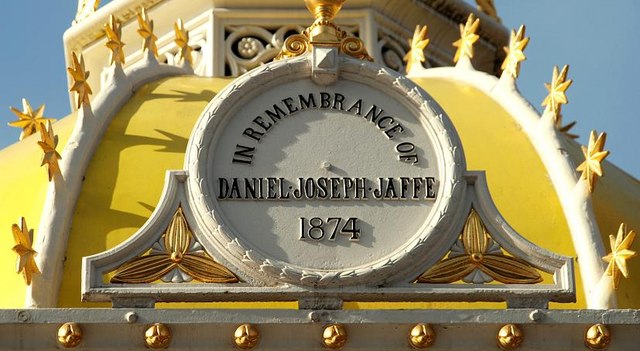 Otto Jaffe, Belfast’s first Jewish Lord Mayor, was born in Hamburg on August 13, 1846. His father, Daniel Joseph Jaffe, was a merchant, who came to Belfast to set up a linen export business in 1850. This business went on to become the largest linen exporter in Ireland.
Otto Jaffe, Belfast’s first Jewish Lord Mayor, was born in Hamburg on August 13, 1846. His father, Daniel Joseph Jaffe, was a merchant, who came to Belfast to set up a linen export business in 1850. This business went on to become the largest linen exporter in Ireland.
The Jaffe Brothers were based at Bedford Street in Belfast. Jaffe was educated at Mr Tate’s school in Hollywood, Co Down and spent the decade from 1867 working in New York. He then returned to Belfast in 1877 to take over the management of the family firm.
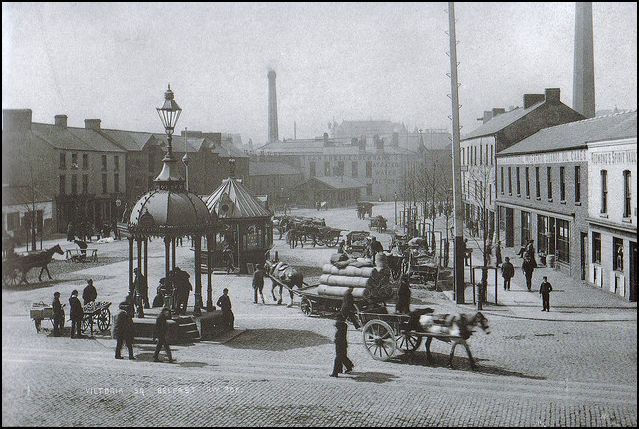 Jaffe erected the Jaffe Memorial fountain in 1874 to commemorate his father, who had funded the building of Belfast’s first synagogue at Great Victoria Street. Originally sited in Victoria Square, the fountain was surmounted by an ornamental lamp the a weather vane. It was later moved to the Botanic Gardens. Another memorial to Daniel Jaffe, a tall granite obelisk was erected in City Cemetery on the Falls Road.
Jaffe erected the Jaffe Memorial fountain in 1874 to commemorate his father, who had funded the building of Belfast’s first synagogue at Great Victoria Street. Originally sited in Victoria Square, the fountain was surmounted by an ornamental lamp the a weather vane. It was later moved to the Botanic Gardens. Another memorial to Daniel Jaffe, a tall granite obelisk was erected in City Cemetery on the Falls Road.
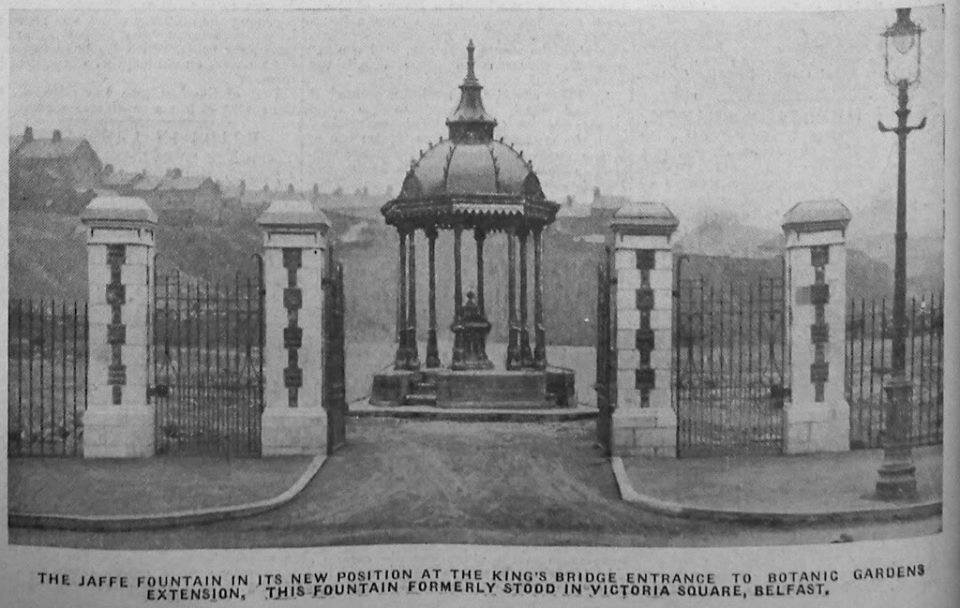
Public fountains were a popular way to commemorate famous people and also offered a public service. It was made by George Smith & Co The Sun Foundry in Glasgow. Interestingly it has a twin in Limerick known as the Russell Fountain. The fountains could be chosen from a catalogue and other similar designs were installed in the UK.
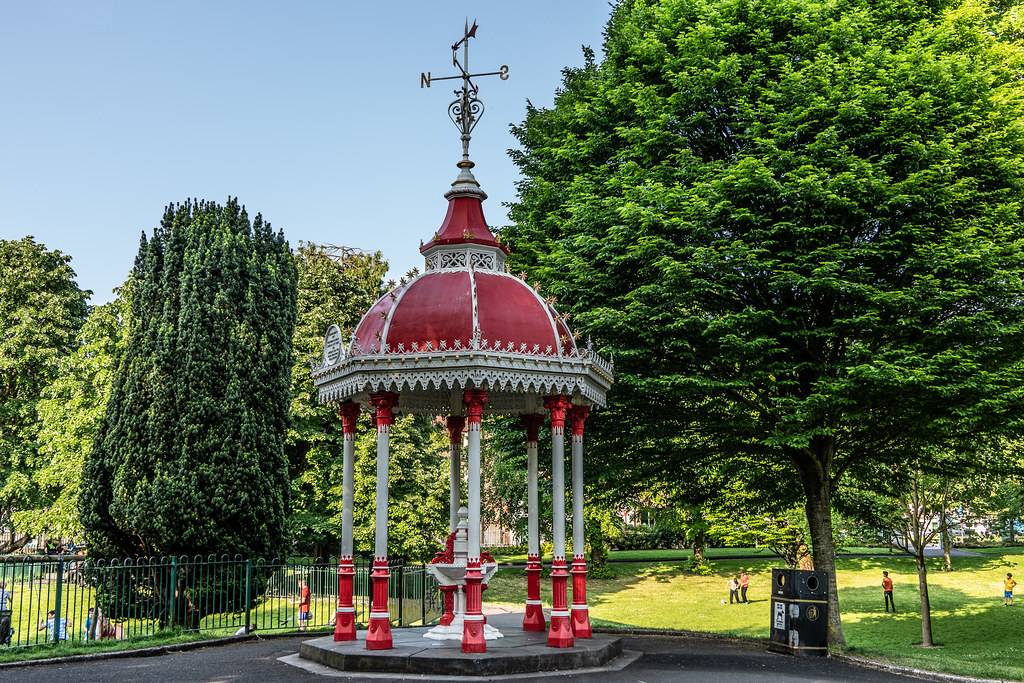
Armagh Apples
County Armagh is known as the ‘Apple blossom’ county or the ‘Orchard County it is definitely apple country, and todays its famous Bradley apples have been awarded with Protected Geographical Indication (PGI) status by the EU. This recognises the specific area which the product comes from protecting and promoting named regional food products that have a reputation or noted characteristics specific to that area.
Recognised for its distinctive taste and flavour, the Armagh Bramley apple is a culinary apple like no other. Traditionally grown and cared for in the region of Armagh, the area has a longstanding and historically significant link to the apple.
Generations of apple growers come largely from County Armagh and the surrounding areas. So impressive are the Bramley orchards of Armagh the county is celebrated as the ‘Orchard County of Ireland’.
About a third of the world’s supply of Bramley apples are grown in Ireland, largely in and around County Armagh. It is the only apple available today for the sole purpose of cooking. Its development since its humble beginnings in 1809 is impressive, the orchards of Armagh are now more than 90% Bramley by area.
County Armagh has been part of the apple growing family for generations; growers take pride in their ability to grow quality produce observing only the best in agricultural practices to achieve the finest cooking apples, which are used in both sweet and savoury dishes and drinks.
The Armagh Bramley is used in the trade by chefs, as well as by shoppers and families from the area who over the years have built up a collection of favourite recipes.
Useful Links
Dunluce Castle
Sitting on the headland of the North Antrim coast keeping silent watch over the sea is the imposing romantic ruin of Dunluce Castle. Once a stronghold of Anglo-Norman knights it became the power base of competing Ulster Scots clans. Home to a Plantation town it witnessed the ravages of the 1641 Rebellion and held the secret of Spanish Armada gold for centuries.
History of Dunluce Castle
The first castle at Dunluce was built in the 13th century by Richard de Burgh, 2nd Earl of Ulster. However, the ruins left today are from the 16th and 17th centuries, when Dunluce became the seat of Clan McDonnell, who overthrew their rivals, the McQuillans, who were Lords of Route.
Around 1608, Randal McDonnell, 1st Earl of Antrim, built the town of Dunluce next to the castle. It was rediscovered in 2011, having been razed to the ground in 1641, and archaeological discoveries suggest a sophisticated piece of town planning around a grid system, as well as evidence of indoor toilets, which were extremely rare at the time.
The castle has its fair share of legends, including part of the kitchen collapsing into the sea, and a resident banshee, Maeve Roe, who tried to elope with her true love but drowned in the stormy seas lurking below.
Dunluce served as the seat of the Earls of Antrim until the family’s fortunes changed following the Battle of the Boyne in 1690. As money dwindled, the castle was left to ruin – parts of it fell into the sea, whilst other stones were scavenged as building materials. Nevertheless, the site was passed down over the centuries, until it came into the part ownership of Winston Churchill through his marriage to Clementine Hozier. He gave his share of the castle to the Northern Irish government in 1928.
Since then, Dunluce has been maintained by the state. It shot to fame as the seat of House Greyjoy, the castle of Pyke, in Game of Thrones.
Dunluce is a romantic ruin today. Sitting atop the craggy rocks, with the blue sea crashing below, it truly does feel like something straight out of a film set. On a grey or stormy day, you’ll be surprised that the castle has survived this long in such a precarious position. Allow an hour or two to fully explore the ruins and soak up some of the magic.
It’s worth trying to arrive early or late – Dunluce has become increasingly popular with tour groups, and when a coachload of people arrive, something of the atmosphere is lost. It’s particularly lovely in the late afternoon: try arriving 45 minutes before closing time to soak up the last of the dregs of sun and hit golden hour.
Getting to Dunluce Castle
Dunluce is just off the A2, about 4 miles east of Portrush. There’s somewhat limited parking nearby (blame the Game of Thrones tourism boom), so if you’re feeling keen, you can walk from Portrush itself – it’s about an hour along glorious coastal paths.
Useful Links
Link 1
Link 2
Link 3
James Craig
James Craig, 1st Viscount Craigavon.
1871-1940
James Craig is rightly regarded by Ulster Unionists as the founding father of the Northern Ireland state. More than any other leader, he mobilised the pre-war unionist resistance to home rule and then became the first premier of Northern Ireland, holding that office for almost twenty years.
Craig was born near Belfast, the son of a self-made millionaire whiskey distiller. He attended school in Scotland before working as a stockbroker and serving in the second Boer War. Entering parliament as a Unionist in 1906, representing East Down, 1906-18 and Mid-Down, 1918-21, he quickly established a reputation as a promising backbencher. He was the architect of Ulster unionist resistance to home rule, 1912-14. His contribution was not as an ideologue or charismatic leader; his strength lay in his organisational ability. He arranged for Edward Carson to act as unionist leader, its public face, whilst he masterminded the campaign of resistance; he stage-managed Covenant Day (28th September 1912), supported and helped organise the Ulster Volunteer Force (UVF) and helped persuade colleagues of the need to import arms prior to the Larne gun-running. Throughout this his overriding concern was to keep Ulster within the Union. Unlike Carson by 1914 he had embraced partition with enthusiasm rather than resignation.
In wartime, Craig encouraged the UVF to enlist; he himself repeatedly failed his army medical. Between 1917-21, he held a succession of junior British government posts with distinction. He also helped influence the terms of the Government of Ireland Act, 1920. It was partly due to Craig that a six county territory for Northern Ireland was chosen, rather than the nine counties favoured by English ministers and some unionists. Though reluctant to abandon a promising ministerial career at Westminster, he accepted the premiership of the six counties in 1921, and remained in office until his death in November 1940.
Craig overcame the military and political opposition which the new state faced, especially from the IRA campaign of 1920-22. He withstood the British government’s efforts during the Treaty negotiations to subordinate Northern Ireland to a Dublin parliament. In addition, he sustained substantial unionist majorities in successive elections for the devolved parliament (1921, ‘25, ‘29, ‘33, ‘38) and secured his party’s domination of local government. But his successes were achieved at the price of a harsh security policy and the neglect of pressing problems. Craig made no sustained attempt to integrate the disaffected minority in the north and no energetic effort to halt or compensate for the decline of the regional industrial economy. Housing, health, and education provision were likewise neglected. Mainly because of declining health, Craig’s premiership was marked by his own increasing political disengagement and long absences from the province. In later years, he presided over the state in a casual, paternalistic manner. His ineffective wartime leadership, 1939-40 generated mounting criticism, even from within his own party. He died at home on 24th November 1940.
Lesson Plans
Link 1
Link 2
Link 3
Useful Links
Link 1
Link 2
Link 3
Herbert Asquith
Herbert Asquith, 1st Earl of Oxford and Asquith.
1852-1928
Herbert Asquith is chiefly remembered as the Prime Minister who passed the ‘liberal reforms’, which laid the foundations of the welfare state. However, he proved to be an ineffective leader in wartime; arguably his failings then were foreshadowed by his mishandling of the Irish question before the conflict began.
Asquith was brought up in Huddersfield where his family had interests in the woollen trade. After gaining a scholarship to Oxford he qualified as a barrister before winning a safe Liberal seat, East Fife, which he held from1885-1918. He was a formidable parliamentarian; his first ministerial post was Home Secretary under Gladstone, 1892-95. Asquith was a highly successful Chancellor of the Exchequer, 1905-08, and became Prime Minister on the retirement of Campbell-Bannerman in 1908. During his premiership he presided over a highly talented cabinet, 1908-14, which was responsible for the ‘liberal reforms’ and for legislation in 1911 reducing the powers of the Lords.
After narrowly winning two General Elections in 1910, his government, dependent on Irish Parliamentary Party support, introduced the Third Home Rule Bill in April 1912. This was based closely on Gladstone’s bills of 1886 and 1893; it would have granted Ireland limited self-government, creating a parliament in Dublin with 32-county jurisdiction. Politically, the most significant weakness of the measure was its failure to cater for the specific interests of the Ulster unionists, and they succeeded in mobilizing effective opposition to it, attracting much influential support in Britain. Beset by other problems – votes for women, industrial unrest – Asquith is criticised for adopting a ‘wait and see’ strategy in response. After introducing the measure, controversially he took no further initiative until March 1914. Meanwhile, between 1912 -14, attitudes in Ireland hardened and a crisis developed, with the formation of the Ulster Volunteer Force and Irish Volunteer Force and gun-running into Larne and Howth. His belated attempts at finding a compromise solution, March-July 1914, failed hopelessly. The likelihood of civil conflict was only averted by the outbreak of war in Europe, when both the nationalist and unionist leadership agreed to postpone a settlement of the Irish question until after hostilities had ceased. This did not prove possible however. After the Easter Rising, Asquith exercised some influence to prevent the execution of more of the rebels. At the same time, he initiated negotiations with the intention of immediately granting home rule to Ireland but these ended without agreement.
Asquith proved to be an ineffective British wartime leader, his party split and he resigned from the premiership in 1916; he never again held political office. He died in 1928.
Lesson Plans
Link 1
Link 2
Link 3
Useful Links
Link 1
Link 2
Link 3
Morelli Ice-Cream
One of the most iconic features of the short summer we enjoy is of course famous Italian ice-cream.
Did you know that one of the earliest arrivals to Northern Ireland were members of the Italian community?
By the mid 1800s, Little Patrick Street, in Belfast, housed the main concentration of immigrants. Names such as Marconi, Fusco, Rossi, Forte, Notarantonio, Vergatti, Capitano and Morelli were common.
By the end of the 1800s, Belfast’s ‘Little Italy’, was well established. Relatives of the original settlers arrived and the Italian population in Belfast grew considerably, extending into York Street.
Morelli family is particularly known in Northern Ireland because of the amazing ice cream which won many awards.
Their inventor came to Portrush at the beginning of 20 century. He brought the recipe from his tiny village located in Italian Alps.
At the beginning the ice needed to be brought by train from Belfast! The ingredients were added later on and delicious Morelli ice cream gained popularity all over Northern Ireland.
Also, Italians contributed to the rich interior design in Northern Ireland. The Crown bar and the interiors of Belfast City Hall are known by its beautiful Italian craftsmanship.
Useful Links
Link 1
Link 2
Link 3


